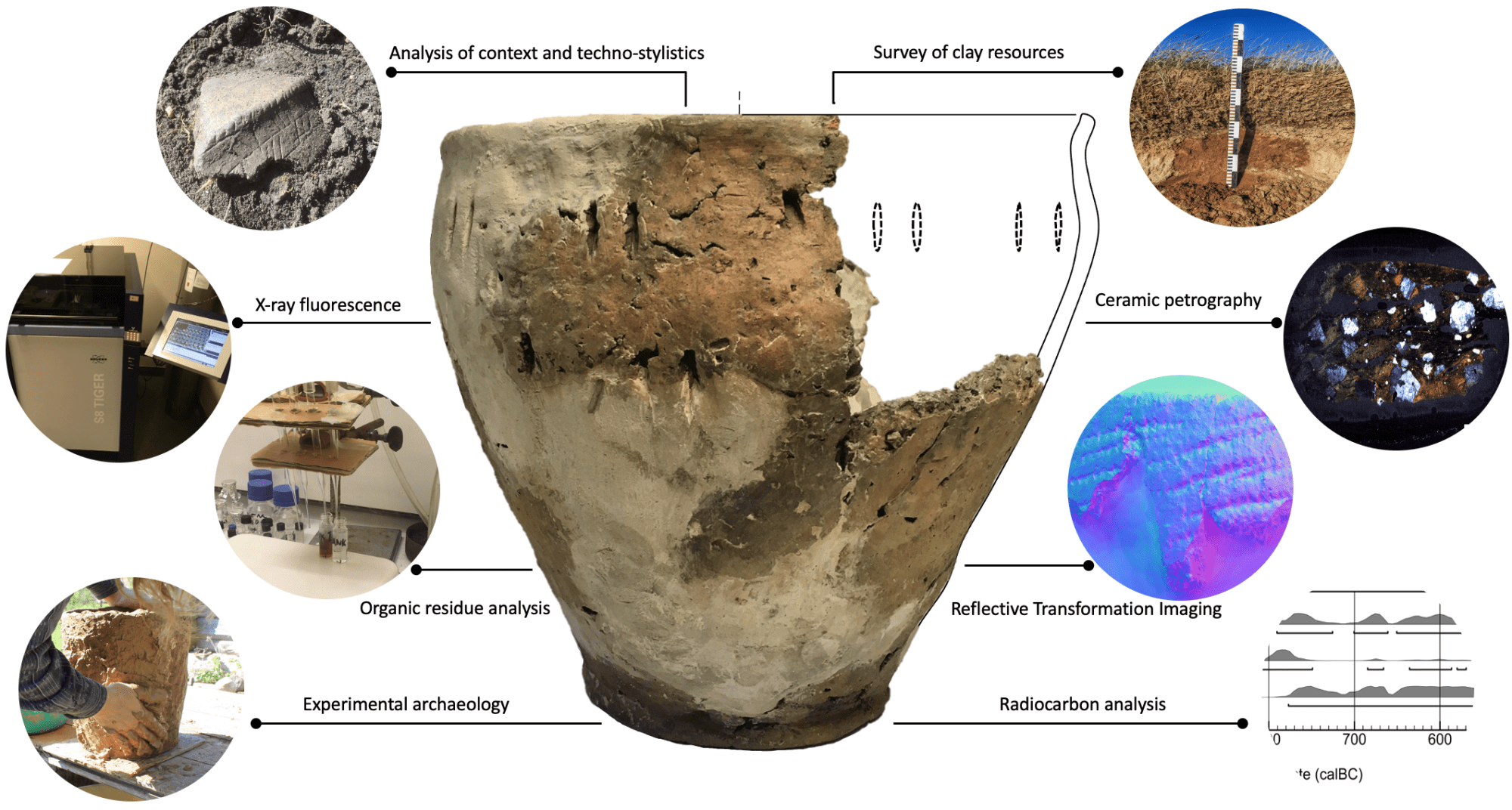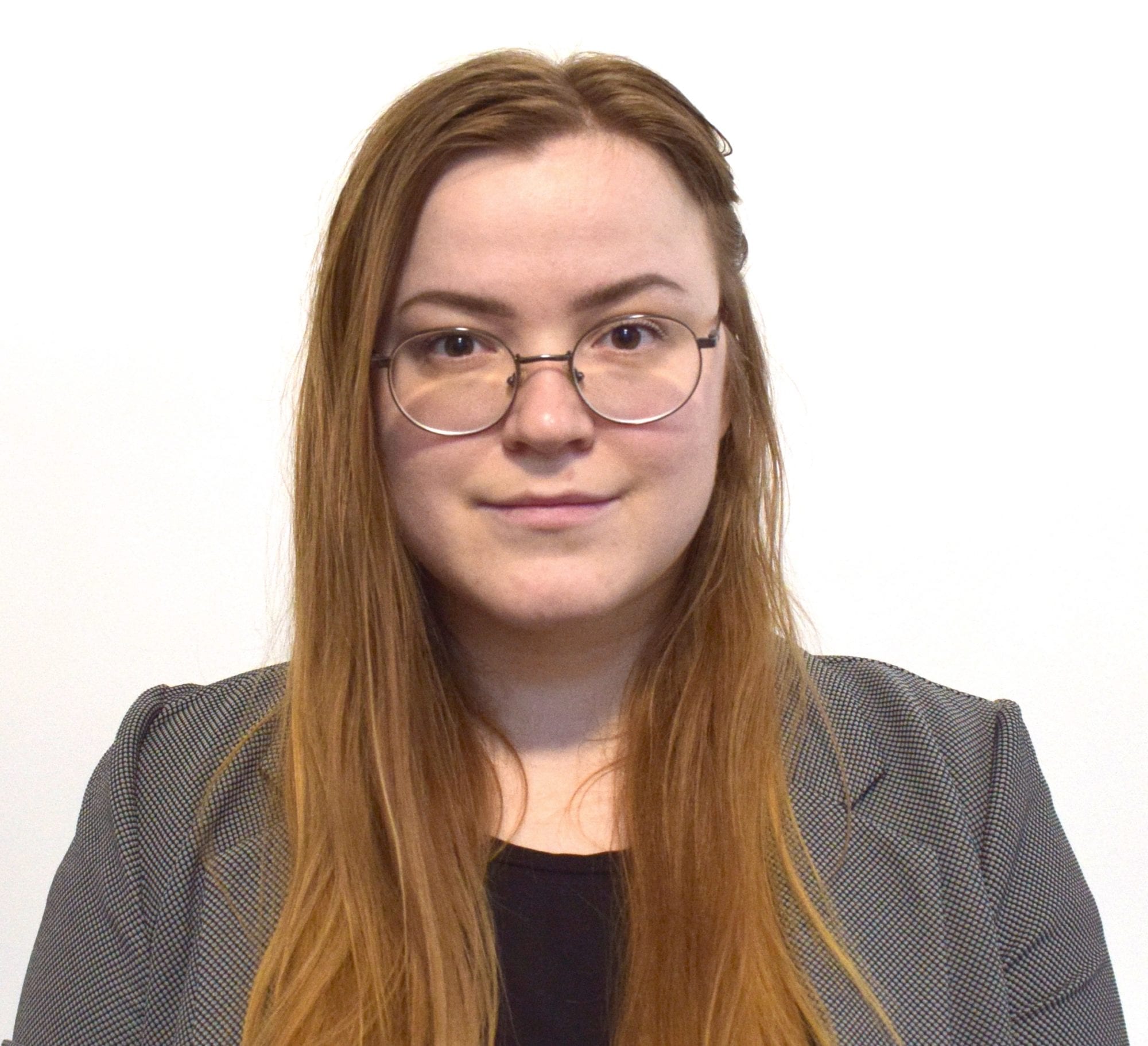The Association for the Advancement of Baltic Studies is proud to announce that Vanda Visocka (University of Latvia) has been awarded the 2021–2022 Aina Birnitis Dissertation-Completion Fellowship in the Humanities for Latvia for her Ph.D. project, “Pottery production, function and meaning during Bronze and Pre-Roman Iron Age in East Baltic.”
The Aina Birnitis Dissertation-Completion Fellowship in the Humanities for Latvia supports a year of research and writing to help advanced graduate students in the humanities in the last year of Ph.D. dissertation writing. The fellowship provides a $21,000 stipend for one year plus $1,000 for university fees.
The 2021 applications were evaluated by the AABS 2021-2022 Grants and Awards Committee consisting of AABS VP for Professional Development Dr. Ineta Dabašinskienė, AABS President Dr. Daunis Auers, and AABS Director-at-Large Dr. Andres Kasekamp.
Pottery production, function and meaning during Bronze and Pre-Roman Iron Age in East Baltic
Vanda Visocka, University of Latvia
Archaeological pottery is like a mirror that reflects different aspects of everyday life in prehistoric humans, such as level of craftsmanship, aesthetics as well as material and spiritual values. Prehistoric ceramics was not only a utility but also served as an artistic expression of the individuals and community. Therefore, when traditions and values of these communities changed, pottery transformed with them. Such transformations are clearly seen in East Baltic during Bronze and Pre-Roman Iron Age (1800–1 BC). During this period, inhabitants of East Baltic were experiencing various transformations, i.e., ideology changed as new burial traditions – borrow graves – appeared, communities also started to cultivate food crops and maintain livestock, changes emerged also in discovery of new, imported material – bronze –, which led to emergence of early hillforts, bronze casting and trade centres. These changes influenced aesthetics of pottery: it became more simple, previously abundant ornamentation now appeared only in rare occasions.

1st barrow grave of Rucavas Bašķi during archaeological excavation in 1938 led by P. Stepiņš (National History Museum of Latvia Department of Archaeology, Inv. No. AA 175).
It is known that changes do not occur in every region simultaneously and have the same impact on the communities in all East Baltic. Changes and impact were strongly dependant on various aspects, such as area of inhabitation (inland or coastal), trade and relationship regions and, of course, the overall views of communities. The aim of this thesis is to determine changes in pottery craft by technological, functional, and mental meaning in East Baltic communities during Bronze and Pre-Roman Iron Age. In order to determine such changes, several aspects and questions must be cleared, such as:
- Chronology of emergence and disappearance of different pottery styles in different regions – when and possibly why different types appeared and disappeared?
- Impact of resource availability to the quality of ceramics and production provenance – local or imported? Were the resources for pottery production easily available for potters?
- Development of pottery craft – how was pottery made? What kind of tools were used for pottery production? What are the tendencies of pottery types in different regions?
- Practical and spiritual function of pottery – what kind of function served different types of household pottery? What was the role of burial pottery?

Tools for bronze casting – moulds and crucibles (From: J. Graudonis Nocietinātās apmetnes Daugavas lejtecē 1989, Zinātne)
Due to the nature of the artifacts, i.e., they are mute and cannot tell a narrative, various classical and interdisciplinary methods will be used in thesis to answer the questions asked. For example, the function and usage of the pottery will be determined by analyzing the context they were found in, as well as by using organic residue analysis. As for pottery production and provenance – survey of nearby clay beds, ceramic petrography and X-ray fluorescence analysis. Visual analysis of pottery characteristics and photogrammetry was used in order to study the development of pottery craft and regional tendencies. Lastly to understand pottery craft and the way pots were made, ethnographic parallels will be studied and various experiments will be made in this project.
This thesis project will result in a comprehensive and uniform study that will provide new information regarding several technological, stylistic, and sociocultural aspects of the pottery production and its role in Bronze and Pre-Roman Iron Age communities in East Baltic. This study will also provide researchers with new meaningful data regarding chronology and dietary patterns that previously have not been obtained.

Methods of pottery analysis used in thesis project (central pot from Brikuļi hillfort, National History Museum of Latvia, Inv. No. A 12468: 211, photos: V. Visocka).

Vanda Visocka, recipient of the AABS 2021–2022 Birnitis Fellowship
Vanda Visocka is a PhD candidate in history and archaeology at the University of Latvia’s Faculty of History and Philosophy. Her thesis is dedicated to the pottery socio-cultural meaning, usage, and production in East Baltic during Bronze and Pre-Roman Iron Age (1800–1 BC). Vanda’s research interests are related to various aspects of ceramics, such as availability of the resources, production techniques, and its role in everyday life of prehistoric communities. She is also interested in the processes of trade and transmission of knowledge between prehistoric communities and change of traditions from Early Bronze to Pre-Roman Iron Age in East Baltic. In her research, Vanda uses experimental archaeology as well as different interdisciplinary techniques – petrography, photogrammetry, geotechnical and chemical analysis, etc.
Vanda currently works at the National History Museum of Latvia’s Department of Archaeology as a storage custodian and as a research assistant at the Faculty of History and Philosophy. She is also participating in the project, “Subsistence strategies and the first demographic transition at the Lake Lubāns wetland: Abora Late Neolithic settlement case study” at the Institute of History of Latvia (lead G. Zariņa, project no. lzp-2020/2-0032). She has participated in various projects, e.g., “Survey of the cultural and historical heritage in the 5th section of the route of Rail Baltica in Latvia” (lead V. Bērziņš, project no. EDZL2017/1 CEF) and “Social transformations in the Bronze Age societies of the Lower Daugava River” (lead A. Vasks, project no. lzp-2018/2-0127). Recently Vanda got elected as a member of the board of Association of Latvian archaeologists.
In her free time Vanda likes to hike and visit cultural heritage and natural monuments, watch documentaries, and read books.
